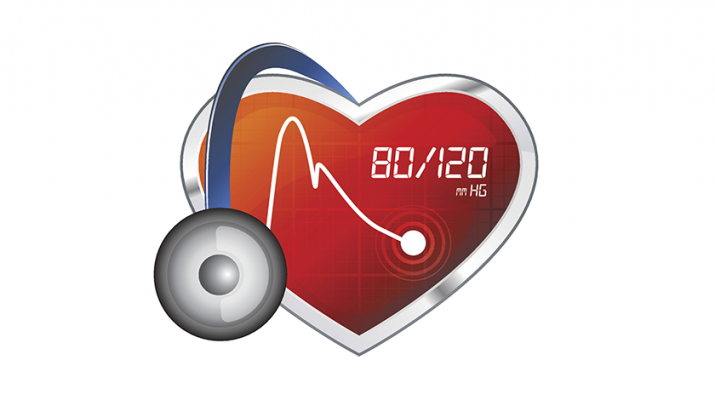New parameters mean more Americans have high blood pressure
By Jim Miller
If you’re unsure what your blood pressure levels should be, you’re not alone. Recent changes in the hypertension guidelines made by the American Heart Association and the American College Cardiology mean that roughly 30 million more Americans than previously thought are now considered to have high blood pressure (hypertension).
According to the new guidelines, anyone with a blood pressure reading above 130/80 is considered to have high blood pressure.
Previously, those with a blood pressure reading between 120/80 and 139/89 would have been put in the prehypertension category and wouldn’t have been considered hypertensive until they got to 140/90.
But the new guidelines eliminate the prehypertension category, putting everyone with systolic pressure readings (top number) between 120 and 129 and a diastolic reading (bottom number) below 80 in a new “elevated” category. And those with a reading of 130/80 or higher fall in some stage of hypertension. Here’s a complete rundown of the new five category blood pressure ranges:
• Normal: A top number less than 120 and a bottom number less than 80.
• Elevated: A top number between 120 and 129, and a bottom number less than 80.
• Stage 1: A top number between 130 and 139, or a bottom number between 80 and 89.
• Stage 2: A top number of 140 or higher, or a bottom number of 90 or higher.
• Hypertensive crisis: A top number over 180 or a bottom number over 120.
Millions of Americans with high blood pressure don’t know they have it because it usually has no outward signs or symptoms. But high blood pressure, over time, can damage your arteries and increase your risk for heart disease, stroke, kidney damage and even dementia. To guard against this, everyone over the age of 40, as well as those younger with risk factors for hypertension should get their blood pressure checked at least once a year.
If you find that your blood pressure numbers fall in the “elevated” category, you should take steps now to get it under control. Lifestyle changes like eating a healthy diet, losing weight, exercising, watching your salt intake, quitting smoking and cutting back on alcohol is often all you need to get it back to normal.
Even if your blood pressure numbers are in the “stage 1” category, lifestyle changes are recommended first, unless you’ve had a heart attack or stroke, or you’re at high risk for cardiovascular problems because you smoke, have high cholesterol or Type 2 diabetes. Then medications may be prescribed.
But if your blood pressure falls in the “stage 2” or higher category, the new guidelines suggest medication, regardless of age, plus lifestyle changes.
There are several different kinds of drugs used to lower blood pressure. It usually makes sense to start with the oldest, safest, and least expensive drug: diuretics or water pills, such as chlorthalidone or hydrochlorothiazide. But these meds can drive up blood sugar levels, so if you have Type 2 diabetes or are at risk of it, your doctor may prescribe another drug, such as an ACE inhibitor, ARB or calcium channel blocker.
You should also be aware that blood pressure drugs could cause side effects including dizziness, gastrointestinal problems, fatigue and headaches. They can also cause a decline in kidney function so make sure your doctor periodically monitors your potassium levels.
For more information, see the American Heart Association comprehensive web page on high blood pressure at Heart.org/HBP.

